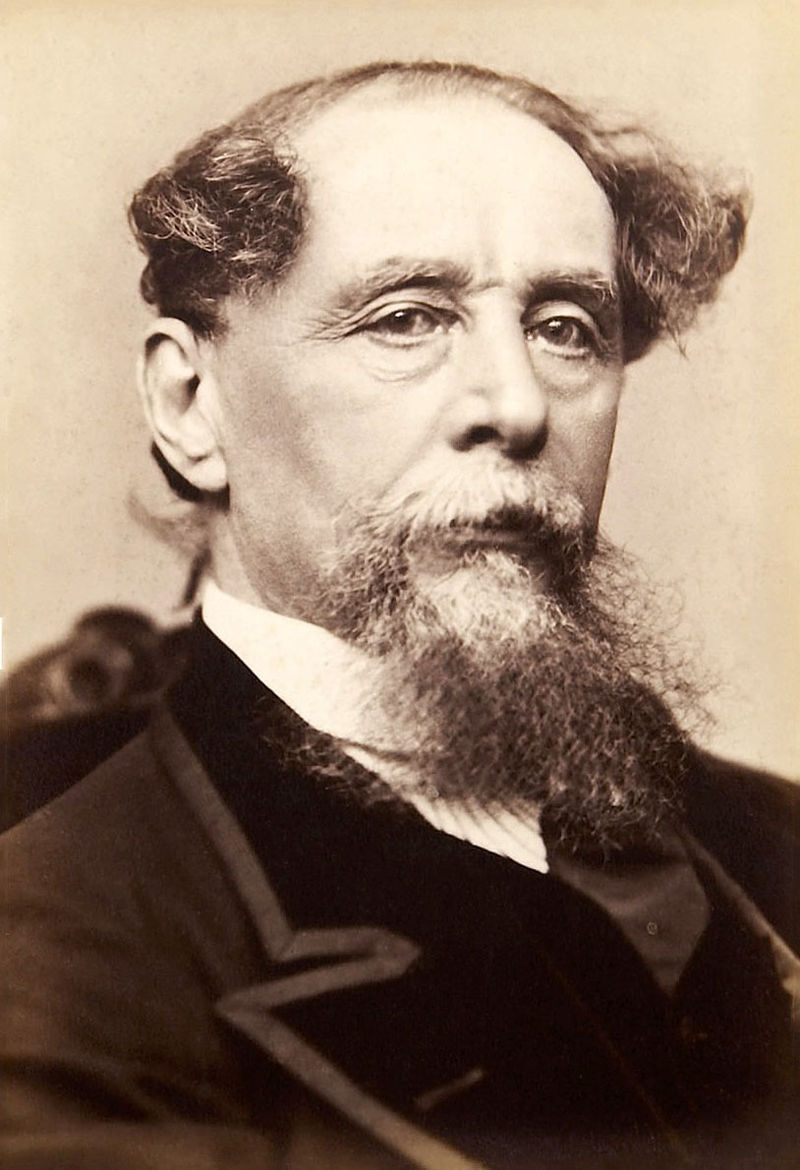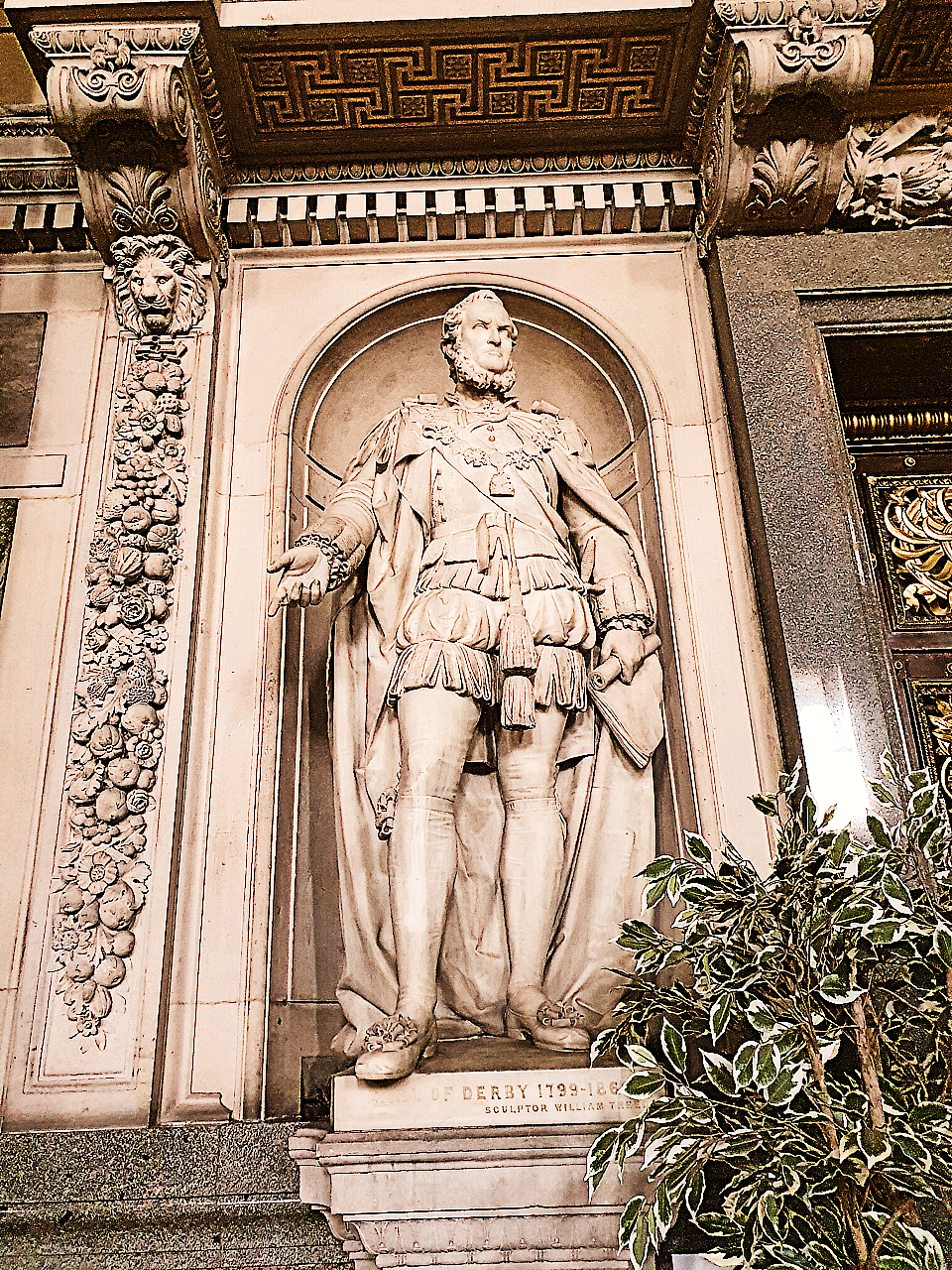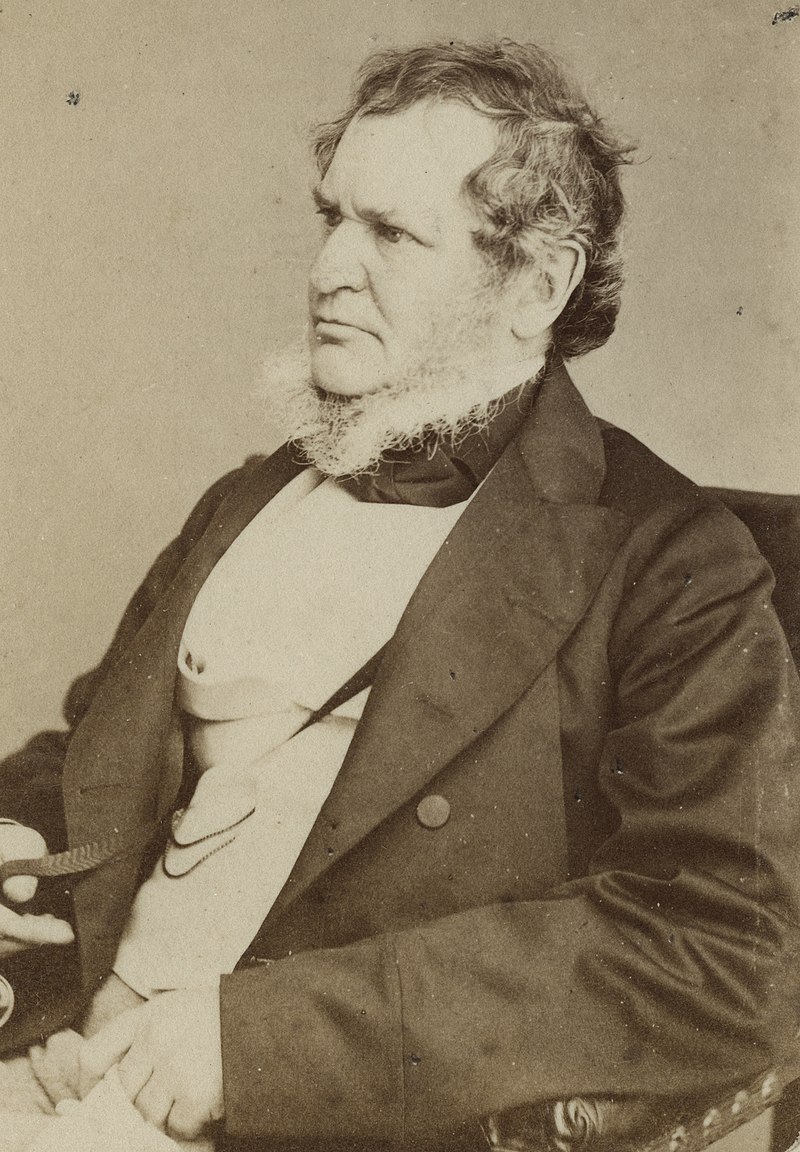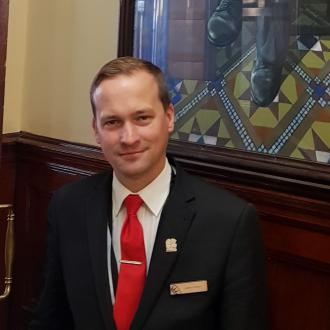Charles Dickens (7 February 1812 – 9 June 1870)
This year, 2020, marks the 150th anniversary of the death of one of Britain’s most famous authors: Charles John Huffam Dickens. Born in Portsmouth on 7 February 1812, Dickens moved to Chatham in Kent while he was still young for his father’s work as a pay office clerk for the Royal Navy. From the age of 10, he lived in London and later Kent.
However, Dickens had reason to visit Liverpool many times during his adult life as a writer, actor and public reader, and was inspired and influenced by his visits to the city. In fact, he mentioned Liverpool in his novels more times than anywhere else outside of London, as reported in the Liverpool Echo.
More specifically, he had a particular fondness for St George’s Hall, describing it as “our old friend” and declaring it to be, according to his tour manager, George Dolby, “The most perfect hall in the world”.
In this series of blogs, City Halls guide, James O’Keeffe, explores Charles Dickens’s links to St George’s Hall…
Dickens and the 14th Earl of Derby
This is one of the thirteen marble statues in the Great Hall of St George’s Hall. The statue, sculpted by William Theed the Younger, depicts the figure of a prominent Liverpool citizen: Edward George Geoffrey Smith Stanley, 14thEarl of Derby (1799-1869) – styled Edward Stanley until 1844, Lord Stanley of Bickerstaffe 1844-1851 and the Earl of Derby until his death in 1869.
As a politician, Stanley would serve as Prime Minister of this country on three occasions and to this day holds the title of being the longest-serving leader of the Conservative Party, his tenure lasting 22 years. As Prime Minister, his governments oversaw a number of important reforms including the India Actin 1858 which, following the Indian Mutiny, removed control of India from the East India Company, bringing it under the control of the British Crown (the creation of the Raj). In 1867, his government passed the Reform Act, extending the vote to some working men for the first time.
Stanley was first elected as an MP in 1822, representing Stockbridge. He would go on to represent Preston, Windsor and finally North Lancashire in Parliament until 1844, whereupon he was elevated to the House of Lords with the title Lord Stanley. He then became the 14thEarl of Derby upon his father, Edward Smith-Stanley, 13th Earl of Derby’s death on 30 June 1851. It was in his role as Chief Secretary for Ireland for the government (November 1830 – March 1833), however, that Stanley first encountered a 21 year-old journalist by the name of Charles Dickens, providing Dickens with his first link to Liverpool and, through this statue at St George’s Hall.
From the age of 16, whilst employed in a solicitor’s office in London, Dickens had taught himself the journalistic technique of shorthand writing (Gurney system), which was essential for reporting speeches, etc. Although the technique was supposed to take two years to learn, Dickens mastered it in just three months!
Equipped with his new skill, the young Dickens became a parliamentary reporter for The Mirror of Parliament from 1830-1834. The Mirror of Parliament was a weekly publication that reported the speeches and debates in the Houses of Parliament (making it a rival to Hansard which still exists today). The publication was founded, and edited, by Dickens’s maternal uncle, John Henry Barrow. In his role as parliamentary reporter, Dickens reported on a six-hour speech made by Edward Stanley, regarding a Bill for the Suppression of Disturbances in Ireland. Stanley read various reports of his speech in a number of publications, but found that all of the reports included errors, except one: the report in The Mirror of Parliament. Stanley was so impressed with the accuracy of this particular report that he asked John Barrow, Dickens’s employer, if he could meet the man who had produced such excellent work. Surprised by Dickens’s youthful appearance, at first not believing that such a young man could have been responsible for the quality of the work, Stanley wrote a letter to Barrow to congratulate him for having a reporter so able and youthful.
In recognition of Stanley’s early appreciation of his talents, Dickens personally delivered a copy of his first published book, Sketches by Boz (1836), to him, reminding Stanley in his accompanying letter of his work that he had so admired in The Mirror of Parliament.
Stanley would go on to serve as Secretary of State for the Colonies from 28 March 1833 – 5 June 1834. In this role, he introduced the Abolition of Slavery Bill which became law as the Slavery Abolition Act in August 1833. The Act of 1833 saw the end of slavery in most parts of the British Empire (with the exception of area controlled by the East India Company and Ceylon (now known as Sri Lanka) freeing 800,000 people from slavery. It marked the beginning of the end of a horrific system that so many enslaved people had fought against through rebellions. It also marked the completion of a long abolition campaign in Britain (William Wilberforce the abolitionist, who had introduced the Slave Trade Act of 1807, bringing to an end the British Slave Trade, died just three days after the third reading of Stanley’s Bill in the House of Commons, July 1833). The Act granted slave owners in the British Empire compensation of £20,000,000 (around £17,000,000,000 today) which the British government secured with a loan from the bankers (and brothers-in-law) Nathan Mayer Rothschild and Moses Montefiore. This represented 40% of the government’s national budget at that time and the loan was not repaid by the country fully until 2015.The people who had been enslaved, on the other hand, saw no financial compensation at all, and were bound to continue working as apprentices under similar conditions for those same slave-owners for another six years until August 1838, when they were finally fully emancipated.
The 14th Earl of Derby, pictured, introduced the Abolition of Slavery Bill which became law as the Slavery Abolition Act in August 1833.
The statue of Edward George Geoffrey Smith-Stanley, the 14thEarl of Derby, was funded by the Council and unveiled on Tuesday 28 September 1869, “in commemoration of the eminent services rendered to the nation by the noble earl during a long and distinguished public career, and also as a memorial of the presentation of the Derby Museum to the town of Liverpool.” (Liverpool Mercury, 7 June 1867). The Derby Museum is known today as the World Museum Liverpool on William Brown Street and its collection originally comprised of Derby’s father’s natural history collection. Reportedly, Derby was very pleased with the design of the statue and it was unveiled by the Mayor of Liverpool, Thomas Dover. Less than a month later, on 23 October 1869, Derby died.
Dickens’s last visit to St George’s Hall was on 9 April 1869. On that occasion Dickens attended a Farewell Banquet in the Great Hall held by the Mayor of Liverpool in his honour: just months before the statue of an early admirer of his work was placed there.
Interestingly, Stanley’s great political opponent in the House of Commons during the early 1830s was Daniel O’Connell, the Irish politician who campaigned for many issues concerning Ireland, including the repeal of the Act of Union. The pair clashed bitterly many times in Parliament as a result of their opposing views.
Coincidentally, Charles Dickens’s first visit to Liverpool may have been thanks to Daniel O’Connell. By 1836, Dickens had become a political reporter working for the newspaper the Morning Chronicle. In a letter of January 1836 to his soon-to-be wife, Catherine Hogarth, he refers to two political dinners in Birmingham and Liverpool, “to which it is very possible I may be sent”. The dinner was held at the Corn Exchange in honour of the visit of Daniel O’Connell to Liverpool on 27 January, but there is no evidence that Dickens was present.
About James O’Keeffe
James works as one of the official guides of Liverpool’s City Halls. He has worked in his role for 12 years and delivers a wide range of tours in St George’s Hall and Liverpool Town Hall, including the monthly guided tours, St George’s Hall Film tours, Footman tours and the special ‘Walk the Floor’ tours during the Minton Floor Reveal.
He also helps to animate events in the buildings including the traditional Toasting of the Haggis at the Burns Night Ceilidh and Dickens Readings in St George’s Hall’s Concert Room.
With a Master’s Degree in History, James’s passion is British history with a particular interest in all things Liverpool.



